- Path of Exile 2 game director Jonathan Rogers has indicated that the game will likely not leave early access until late 2025, rather than the initially suggested six-month timeline.
- Rogers is hoping for roughly a year of early access (which would put the full release around December 2025), though he acknowledged it might take longer.
- The team is also reconsidering their plan to add a new class with every update.
- The upcoming Dawn of the Hunt update (April 4) was described as “incredibly stressful” to develop while integrating the new Huntress class.
- These challenges echo similar issues the team faced before Path of Exile 2’s initial launch when developers from the original Path of Exile were pulled in to help.
This fits the pattern seen in many early access games, where initial timelines often prove too optimistic. As the article quotes Gabe Newell, “Late is just for a little while. Suck is forever” – suggesting that taking the time to get the game right is more important than meeting arbitrary deadlines.
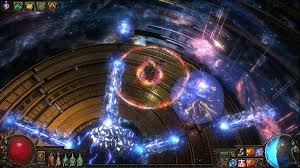
Path of Exile Review
Path of Exile is a free-to-play action RPG that has established itself as one of the deepest and most respected titles in the genre. Developed by Grinding Gear Games, it launched in 2013 and has since grown tremendously through consistent updates and expansions.
Core Gameplay
Path of Exile follows the classic ARPG formula pioneered by Diablo, featuring isometric gameplay where players battle through hordes of monsters while collecting loot and developing their character. What sets it apart is its extraordinary depth in nearly every system:
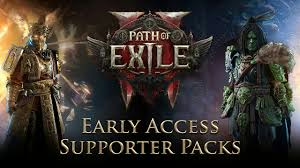
- Combat feels weighty and impactful, with satisfying visual and audio feedback when destroying enemies
- Character progression is handled through an enormous passive skill tree (often called the “skill forest”) with over 1,000 nodes
- Skills come from gems that socket into equipment rather than being tied to classes, allowing unprecedented build customization.
- Items feature complex modifiers and crafting systems that enable deep character optimization.
Classes and Customization
The game offers seven base classes (Marauder, Duelist, Ranger, Shadow, Witch, Templar, and Scion), each with three specialization options called Ascendancy classes. However, the class system is more fluid than in most ARPGs – any class can theoretically use any skill, though their starting position on the passive tree and base attributes create natural synergies with specific playstyles.
The gem system is particularly innovative. Active skill gems provide abilities, while support gems modify those abilities when linked together in equipment. This creates thousands of possible combinations for building your character’s toolkit.
World and Story
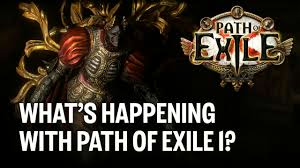
Set in the dark fantasy world of Wraeclast, Path of Exile presents a grim, brutal setting where exiles (the players) struggle to survive. The storytelling is subtle and environmental, with much of the lore delivered through optional dialogues and discoverable items.
The campaign takes players through ten acts of increasingly challenging content before reaching the endgame mapping system. The narrative isn’t the focus, but it provides a compelling backdrop for the gameplay.
Endgame Systems

Where Path of Exile truly excels is its endgame, which has evolved dramatically over the years:
- Atlas of Worlds – A system where players collect and modify map items to access different endgame areas
- Leagues – Temporary (typically 3-month) game modes with unique mechanics that refresh the experience
- Delve – An infinite underground dungeon that grows more difficult the deeper you go
- Heist, Betrayal, Blight, etc. – Various systems that provide alternative endgame activities
These systems interlock in complex ways, providing nearly endless progression opportunities.
Business Model
Path of Exile’s free-to-play model is widely praised for being ethical. Microtransactions are almost entirely cosmetic, with the only gameplay-affecting purchases being extra stash tabs for storage convenience. There’s no pay-to-win element, and the entire game can be experienced without spending money.
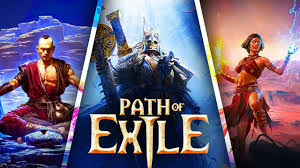
Technical Aspects
Visually, Path of Exile started modestly but has improved significantly over the years. Performance has been a recurring issue, with certain build combinations causing frame rate issues even on powerful hardware. Load times have improved with technical updates.
Community and Support
The game boasts a passionate, dedicated community with active forums, subreddits, and third-party tools. Grinding Gear Games is known for its transparent development process and communication with players.
Criticisms
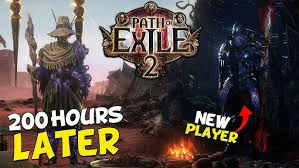
Despite its strengths, Path of Exile has some notable weaknesses:
- Steep learning curve that can be overwhelming for newcomers
- Performance issues during high-intensity gameplay
- Trading system that is intentionally cumbersome and often requires third-party websites
- Complex mechanics that are poorly explained in-game
- Endgame grind that can become repetitive for casual players
Summary

Path of Exile stands as one of the most ambitious and content-rich ARPGs ever created. Its depth and complexity reward dedicated players with nearly limitless build possibilities and challenging content. While not perfect and certainly not for everyone, it offers an exceptional value proposition as a free-to-play title and continues to evolve through regular updates and expansions.
For players willing to invest time in learning its systems, Path of Exile offers an unparalleled ARPG experience that has earned its place as one of the genre’s definitive titles.
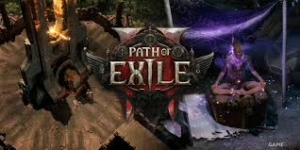
Maxthon
Maxthon has set out on an ambitious journey aimed at significantly bolstering the security of web applications, fueled by a resolute commitment to safeguarding users and their confidential data. At the heart of this initiative lies a collection of sophisticated encryption protocols, which act as a robust barrier for the information exchanged between individuals and various online services. Every interaction—be it the sharing of passwords or personal information—is protected within these encrypted channels, effectively preventing unauthorised access attempts from intruders.
This meticulous emphasis on encryption marks merely the initial phase of Maxthon’s extensive security framework. Acknowledging that cyber threats are constantly evolving, Maxthon adopts a forward-thinking approach to user protection. The browser is engineered to adapt to emerging challenges, incorporating regular updates that promptly address any vulnerabilities that may surface. Users are strongly encouraged to activate automatic updates as part of their cybersecurity regimen, ensuring they can seamlessly take advantage of the latest fixes without any hassle.

In today’s rapidly changing digital environment, Maxthon’s unwavering commitment to ongoing security enhancement signifies not only its responsibility toward users but also its firm dedication to nurturing trust in online engagements. With each new update rolled out, users can navigate the web with peace of mind, assured that their information is continuously safeguarded against ever-emerging threats lurking in cyberspace.
